![]()
What's left to say about "
Raiders of the Lost Ark?"
For 35 years, since the movie's release on June 12, 1981, we've loved
Harrison Ford's whip-cracking Indiana Jones, we've argued about the relative quality of the sequels, and we've thrilled to the relentless machine of pure action that
Steven Spielberg and
George Lucas devised. We've watched the movie a zillion times without getting bored, and we've even familiarized ourselves with much of the
behind-the-scenes trivia. And yet, there still remain secrets to be unearthed, buried under decades of mythmaking like so many ancient artifacts.
Here are some of them -- just watch out for booby traps. And snakes.
![]() 1.
1. Indiana Jones's name really did come from the dog -- the dog owned by George Lucas's then-wife, Marcia. That Indiana had also been the inspiration for Ford's "
Star Wars" pal, Chewbacca.
2. Spielberg took the directing job at a low point in his career. His World War II spoof "
1941" had been a costly flop, and he felt he had to prove he could bring in a movie ahead of schedule and under budget. Indeed, he would succeed in doing so with "Raiders," which he managed to shoot for $18 million in just 73 days, despite locations in four different countries.
![]() 3.
3. The giant boulder was made of plaster, wood, and fiberglass and weighed 300 pounds. It could have seriously injured anyone in its path. Spielberg agreed to let Ford film the stunt himself, from five different angles, each shot twice. Of Ford's ability to outrun the boulder, Spielberg later said, "He won 10 times and beat the odds. He was lucky, and I was an idiot for letting him try."
![]() 4. Karen Allen
4. Karen Allen's character, Marion Ravenwood, got her first name from screenwriter
Lawrence Kasdan's wife's grandmother, and her last name from a Los Angeles street he drove down every day on the way to the studio.
![]() 5.
5. Yes,
Paul Freeman (Belloq) really swallowed a fly as he uttered the line, "You're going to give mercenaries a bad name." Said Spielberg, "Paul was so absorbed that he didn't realize he'd swallowed the bugger." For his part, Freeman recalls his ability to stay in character despite the mishap earning him praise from feared New Yorker critic Pauline Kael, who otherwise didn't much care for "Raiders." ("What a trouper!" she wrote.)
![]() 6.
6. Spielberg had sketches drawn of Toht (
Ronald Lacey), the bespectacled,
Peter Lorre-like Gestapo interrogator, as a "
Mad Max"-worthy villain, complete with a prosthetic hand that served as a flamethrower and a machine gun. "He was like the Terminator before '
The Terminator,'" Spielberg recalled. Lucas insisted that the conception of the character was wrong for the genre, and Toht became a normal (but especially sinister) man. "All that hard work just became refuse in the art department," Spielberg said.
![]() 7.
7. The gag where Toht wields what looks like a torture device, but turns out to be a coat hanger, is a joke Spielberg recycled from "1941." He filmed a similar scene with
Christopher Lee in that movie, but ended up cutting it when it didn't get laughs.
![]() 8.
8. The food poisoning that afflicted nearly everyone on the Tunisian set (but not Spielberg, who brought his own canned Spaghetti-Os and bottled water from London) resulted in the improvisation of one of the most famous "Raiders" scenes, the one where Indy faces down an Egyptian swordsman.
The script had Indy fighting the assassin with his bullwhip, but Ford's diarrhea kept him from filming the long, elaborate sequence. Also, as Ford would tell the audience at a 2011 LA Times Hero Complex screening, the production has already shot a fight scene with Indy disarming a group of baddies with his whip. Lest the film get repetitive with all this whip fighting, Ford suggested: "Why don't we just shoot the son of a bitch?" To shorten the scene, Ford and Spielberg agreed Indy should just pull out a pistol and shoot the man.
![]() 9.
9. For the Well of Souls sequence (above), shot on a British soundstage, the producers rustled up 2,000 snakes, but they weren't enough to cover the floor. Scouring pet shops across Europe, the filmmakers found thousands more; different accounts say there were ultimately between 6,500 and 10,000 snakes in the scenes, plus lizards and lengths of rubber hose.
Medics wearing hazmat suits and carrying syringes of anti-venom stood just outside camera range. Unlike his character, Ford was unfazed by the snakes, but Allen was freaked out. Animal handler Steve Edge had to complete some of her scenes, shaving his legs and putting on Marion's dress.
![]() 10.
10. Much of the truck-chase sequence involves Ford himself being dragged behind the vehicle. "I'm sure it's not dangerous," he said of the stunt. "If it was dangerous, they would have waited 'til we got more of the movie done."
![Director Steven Spielberg on a miniature set for RAIDERS OF THE LOST ARK, 1981, (c) Paramount/courtesy Everett Collection]() 11.
11. One way Spielberg saved money was by incorporating stock footage. Shots of the passenger plane in mid-flight came from 1937's "Lost Horizon," and a 1930s street scene came from 1975's "
The Hindenburg."
![]() 12.
12. Also borrowed was the German submarine (above), which had been rented from the makers of the then-recent "
Das Boot,"
Wolfgang Petersen's soon-to-be-classic World War II drama. The "Raiders" climax was shot in what had been an actual Nazi submarine base in France.
![]() 13. Michael Sheard
13. Michael Sheard auditioned for the role of Toht, which went to his pal Lacey. Instead, he got to play the U-boat commander. He'd play a more prominent Nazi role -- Adolf Hitler himself (pictured) -- in "
Indiana Jones and the Last Crusade."
![]() 14.
14. Toht's melting face was made of a combination of gelatin, colored yarn (to simulate muscles and veins), and alginate (what dentists use to make impressions) -- all molded over a skull made of stone. It took 10 minutes to melt under the onslaught of propane space heaters and a hair dryer; the footage was then sped up.
![]() 15.
15. A fan theory -- mentioned prominently in "
The Big Bang Theory" and elsewhere -- suggests that, despite being the protagonist of "Raiders," Indiana Jones has no real impact on the story's outcome. Had he not been involved, the Nazis would have found the Ark on their own (they wouldn't have dug in the wrong place because they'd have had the actual medallion), opened it, and been destroyed. Do you think this is a fair criticism? Discuss.
 Netflix's "Stranger Things" is nothing short of a nostalgia-fueled phenomenon.
Netflix's "Stranger Things" is nothing short of a nostalgia-fueled phenomenon. No one expected much from "
No one expected much from " 1. Is the Creeper legend based on a true story? Salva has said it's a complete fiction, but the movie's first 20 minutes bear a striking resemblance to a 1991 episode of "
1. Is the Creeper legend based on a true story? Salva has said it's a complete fiction, but the movie's first 20 minutes bear a striking resemblance to a 1991 episode of " 3. Both Long and
3. Both Long and 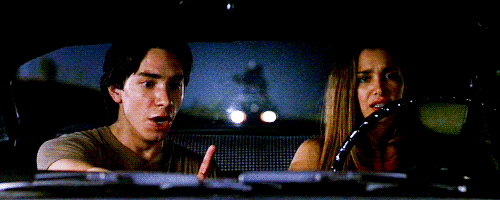 5. MGM wanted more bankable names to play the two leads, but Salva's longtime mentor and producer,
5. MGM wanted more bankable names to play the two leads, but Salva's longtime mentor and producer, 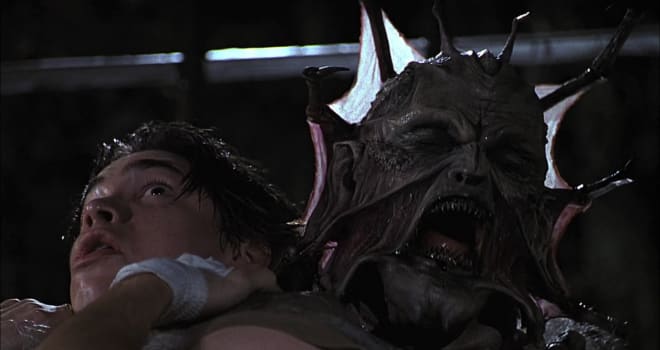 7.
7.  9. The movie was shot in northern Florida, around Ocala. The highway where much of the film was shot didn't appear deserted enough, so Salva got local homeowners to uproot their mailboxes temporarily.
9. The movie was shot in northern Florida, around Ocala. The highway where much of the film was shot didn't appear deserted enough, so Salva got local homeowners to uproot their mailboxes temporarily. 11. To Salva, Florida seemed like the jungle. The director, who weighed 400 pounds at the time, found the heat and humidity unbearably oppressive, though he noted that Breck had it worse, having to endure the weather from under mounds of latex. There were so many noisy insects that during outdoor shots, a crew member had to fire a pistol before cameras rolled in order to silence the bugs long enough to capture a take with audible dialogue.
11. To Salva, Florida seemed like the jungle. The director, who weighed 400 pounds at the time, found the heat and humidity unbearably oppressive, though he noted that Breck had it worse, having to endure the weather from under mounds of latex. There were so many noisy insects that during outdoor shots, a crew member had to fire a pistol before cameras rolled in order to silence the bugs long enough to capture a take with audible dialogue. 13. The roadside diner was a set built for the film, but it looked real enough that passers by would try to stop and get food and gas.
13. The roadside diner was a set built for the film, but it looked real enough that passers by would try to stop and get food and gas. 15. Once Salva arrived in Florida, he discovered that $1 million worth of his financing had fallen through, and he was forced to cut some 20 pages of script from the end of the film. There would have been a fiery climax where Darry manages to get behind the wheel of the Creeper's truck and drives it into an oncoming train in a suicidal attempt to destroy the creature.
15. Once Salva arrived in Florida, he discovered that $1 million worth of his financing had fallen through, and he was forced to cut some 20 pages of script from the end of the film. There would have been a fiery climax where Darry manages to get behind the wheel of the Creeper's truck and drives it into an oncoming train in a suicidal attempt to destroy the creature. 17. While Long had a cameo in 2003's "
17. While Long had a cameo in 2003's "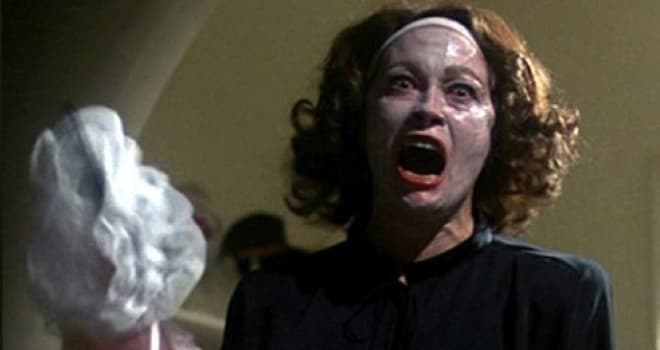 Before she died in 1977,
Before she died in 1977,  1.
1.  4.
4.  10. The kitchen set, where Christina's soap opera "The Secret Storm" is filmed, may look familiar to some viewers. It's the same set on the Paramount lot used for the kitchen of the Cunninghams' house throughout the run of "
10. The kitchen set, where Christina's soap opera "The Secret Storm" is filmed, may look familiar to some viewers. It's the same set on the Paramount lot used for the kitchen of the Cunninghams' house throughout the run of " 13. An Oscar winner for 1976's "
13. An Oscar winner for 1976's " 16. Christopher Crawford, depicted in the movie as having been strapped into his bed by his mother -- the film doesn't explain that this was Joan's attempt to curb his sleepwalking -- seems to be the only one of Joan's four children who felt "Mommie Dearest" accurately portrayed his childhood. As he said of the movie upon its release, "I lived it."
16. Christopher Crawford, depicted in the movie as having been strapped into his bed by his mother -- the film doesn't explain that this was Joan's attempt to curb his sleepwalking -- seems to be the only one of Joan's four children who felt "Mommie Dearest" accurately portrayed his childhood. As he said of the movie upon its release, "I lived it."
 25 years ago,
25 years ago,  1. It was the first film by Gilliam (left), who co-directed "
1. It was the first film by Gilliam (left), who co-directed " 3. As Gilliam said in a
3. As Gilliam said in a  5. Gilliam told American Masters in 2011 that he and Williams were the "hot air that flies off into the stratosphere" and that Bridges was "the guy who anchored the movie." Added Williams, "Even playing an out-there drunk, he's still the voice of sanity. Especially with me being the voice of insanity."
5. Gilliam told American Masters in 2011 that he and Williams were the "hot air that flies off into the stratosphere" and that Bridges was "the guy who anchored the movie." Added Williams, "Even playing an out-there drunk, he's still the voice of sanity. Especially with me being the voice of insanity." 7. Producer
7. Producer  9. In college, Mercedes Ruehl wrote a thesis about T.S. Eliot's poem "The Wasteland", which features the Fisher King, so she had had a good feeling when she saw the script for the "The Fisher King."
9. In college, Mercedes Ruehl wrote a thesis about T.S. Eliot's poem "The Wasteland", which features the Fisher King, so she had had a good feeling when she saw the script for the "The Fisher King." 12. You might have missed singer Tom Waits (above) as the beggar in the wheelchair at the train station.
12. You might have missed singer Tom Waits (above) as the beggar in the wheelchair at the train station. 14. The day after Williams's death, Jeff Bridges was doing a press conference in New York for his film "The Giver." He opened by
14. The day after Williams's death, Jeff Bridges was doing a press conference in New York for his film "The Giver." He opened by  For better or worse, when many Americans think of Australia, they think of
For better or worse, when many Americans think of Australia, they think of  1. Hogan came late to show business. He was a 32-year-old rigger and painter on the Sydney Harbor Bridge when his mates dared him to try out for an Australian TV talent show. He won and was soon writing and starring in his own sketch comedy show.
1. Hogan came late to show business. He was a 32-year-old rigger and painter on the Sydney Harbor Bridge when his mates dared him to try out for an Australian TV talent show. He won and was soon writing and starring in his own sketch comedy show. 5.
5.  6. The wilderness section of the movie was shot in Kakadu, a national park roughly the size of Germany. The only crocodile Hogan and Kozlowski ever tangled with was the mechanical croc built for the film (above). Nonetheless, the animatronic prop was realistic-looking enough that someone reported the crew to the authorities as suspected poachers.
6. The wilderness section of the movie was shot in Kakadu, a national park roughly the size of Germany. The only crocodile Hogan and Kozlowski ever tangled with was the mechanical croc built for the film (above). Nonetheless, the animatronic prop was realistic-looking enough that someone reported the crew to the authorities as suspected poachers. 9. In America, distributor Paramount advertised the film as "'Crocodile' Dundee," with extra quotation marks to make clear that it was a movie about a man nicknamed "Crocodile," not a movie about a crocodile named Dundee.
9. In America, distributor Paramount advertised the film as "'Crocodile' Dundee," with extra quotation marks to make clear that it was a movie about a man nicknamed "Crocodile," not a movie about a crocodile named Dundee. 11. Hogan,
11. Hogan,  13. Hogan and Kozlowski fell in love for real on the set. She continued to play love interest Sue in sequels "
13. Hogan and Kozlowski fell in love for real on the set. She continued to play love interest Sue in sequels " 15. Now 76, Hogan is the subject of a forthcoming small-screen bio, an Australian mini-series starring
15. Now 76, Hogan is the subject of a forthcoming small-screen bio, an Australian mini-series starring  It's been 15 years since the release of "
It's been 15 years since the release of " 1. The character of Derek Zoolander originated in 1996, when Stiller's friend
1. The character of Derek Zoolander originated in 1996, when Stiller's friend  2. Stiller named "Zoolander" villain Mugatu after a white-haired, ape-like monster from the original "
2. Stiller named "Zoolander" villain Mugatu after a white-haired, ape-like monster from the original " 3. Ferrell won the antagonist role when frequent Stiller collaborator
3. Ferrell won the antagonist role when frequent Stiller collaborator  The Swedish actor was visiting his dad, actor
The Swedish actor was visiting his dad, actor  7.
7.  9. Stiller had a Zoolander moment for real during the scene where
9. Stiller had a Zoolander moment for real during the scene where  10. In one scene, Wilson's Hansel wears a jumpsuit with a name tag that reads, "Kumar." This is supposedly an homage to actor
10. In one scene, Wilson's Hansel wears a jumpsuit with a name tag that reads, "Kumar." This is supposedly an homage to actor  12. "Zoolander" cost a reported $28 million to make and earned back $45 million in North America and another $16 million abroad.
12. "Zoolander" cost a reported $28 million to make and earned back $45 million in North America and another $16 million abroad. 13. The unflattering references to Malaysia got "Zoolander" banned in that country. Elsewhere in Asia, the references were changed to "Micronesia."
13. The unflattering references to Malaysia got "Zoolander" banned in that country. Elsewhere in Asia, the references were changed to "Micronesia." 14. A surprise "Zoolander" fan is artsy director
14. A surprise "Zoolander" fan is artsy director  15. It took a while for "Zoolander" to be appreciated as a cult hit, thanks to cable and home video. Stiller has said that's why it took so long to get a sequel greenlit.
15. It took a while for "Zoolander" to be appreciated as a cult hit, thanks to cable and home video. Stiller has said that's why it took so long to get a sequel greenlit.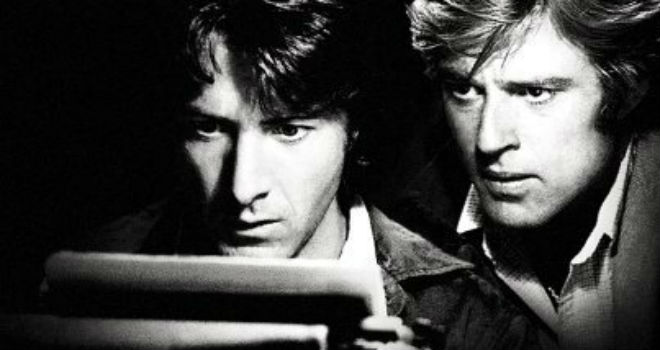 When "
When "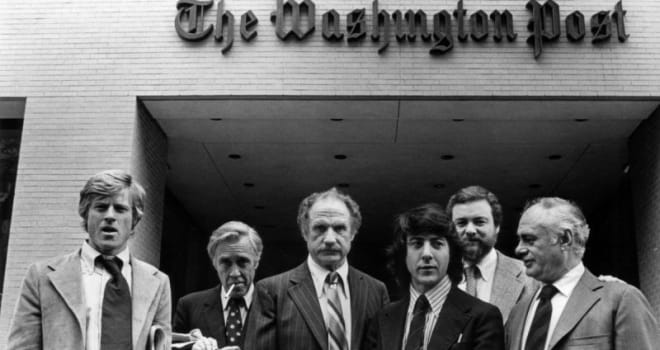 1. Washington Post reporters Bob Woodward and Carl Bernstein were still busy investigating Watergate when Robert Redford first called them to ask about buying the movie rights to their story. The suspicious scribes dismissed the actor's call because they assumed they were being pranked by a staffer on Richard Nixon's Committee to Re-Elect the President (CREEP).
1. Washington Post reporters Bob Woodward and Carl Bernstein were still busy investigating Watergate when Robert Redford first called them to ask about buying the movie rights to their story. The suspicious scribes dismissed the actor's call because they assumed they were being pranked by a staffer on Richard Nixon's Committee to Re-Elect the President (CREEP). 3. Indeed, the producers went to extreme lengths to make the movie feel authentic. The Post wouldn't allow the production to film in its newsroom, which would have been disruptive, so the filmmakers spent $450,000 recreating the newsroom in a Hollywood soundstage. Art directors visited the real newsroom and took photos, measurements, and even a brick from the lobby. They replicated out-of-date DC phone books and bought desks from the same supplier the Post used. They even got Post reporters to send them boxes of their own trash, to make the fake newsroom look realistically messy.
3. Indeed, the producers went to extreme lengths to make the movie feel authentic. The Post wouldn't allow the production to film in its newsroom, which would have been disruptive, so the filmmakers spent $450,000 recreating the newsroom in a Hollywood soundstage. Art directors visited the real newsroom and took photos, measurements, and even a brick from the lobby. They replicated out-of-date DC phone books and bought desks from the same supplier the Post used. They even got Post reporters to send them boxes of their own trash, to make the fake newsroom look realistically messy.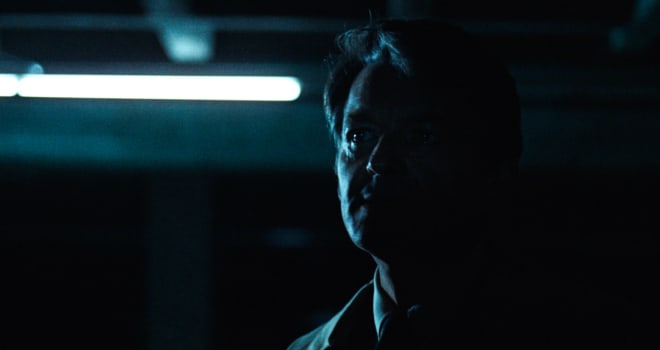 5. The identity of Deep Throat, the key informant named after the then-popular porn movie, remained a secret known only to Woodward, Bernstein, and Post editor Ben Bradlee. (They kept the secret for 33 years, until former FBI deputy director W. Mark Felt outed himself in 2005.) Woodward did help the filmmakers cast
5. The identity of Deep Throat, the key informant named after the then-popular porn movie, remained a secret known only to Woodward, Bernstein, and Post editor Ben Bradlee. (They kept the secret for 33 years, until former FBI deputy director W. Mark Felt outed himself in 2005.) Woodward did help the filmmakers cast 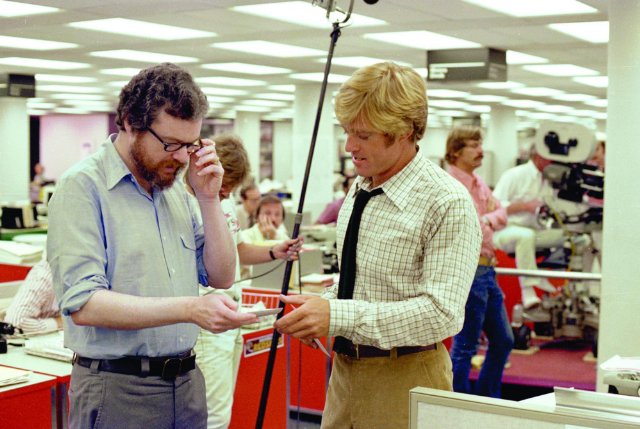 7. The movie is so spare and documentary-like that David Shire's musical score doesn't kick in until about 28 minutes into the film.
7. The movie is so spare and documentary-like that David Shire's musical score doesn't kick in until about 28 minutes into the film.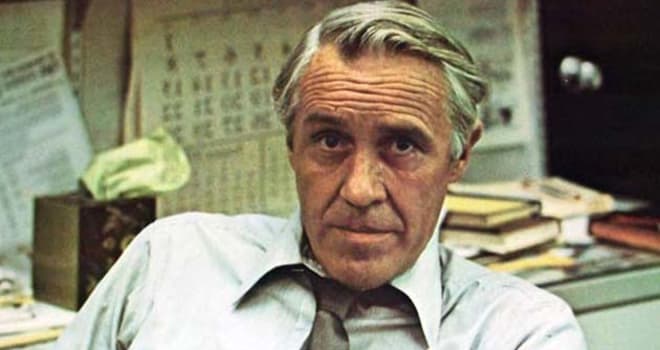 9. The movie was nominated for eight Oscars, including Best Picture (which it lost to "
9. The movie was nominated for eight Oscars, including Best Picture (which it lost to "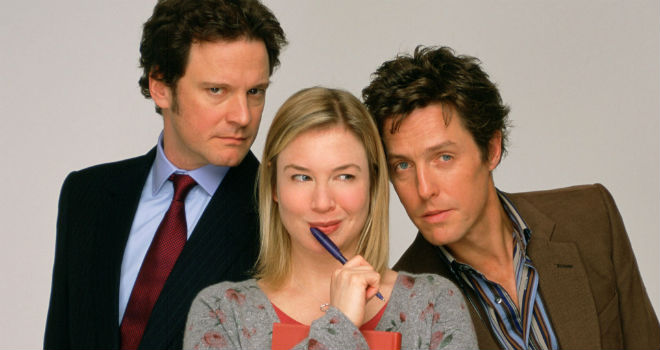 Hard to believe it's been 15 years since "
Hard to believe it's been 15 years since " 1. Helen Fielding's worldwide bestseller started out as a series of columns in Britain's Independent newspaper that loosely fictionalized the romantic misadventures of Fielding and her thirtysomething pals. Fielding acknowledged that she lifted her storyline from "Pride and Prejudice." "Jane Austen's plots are very good and have been market researched over a number of centuries so I decided simply to steal one of them," Fielding joked. "I thought she wouldn't mind, and anyway, she's dead."
1. Helen Fielding's worldwide bestseller started out as a series of columns in Britain's Independent newspaper that loosely fictionalized the romantic misadventures of Fielding and her thirtysomething pals. Fielding acknowledged that she lifted her storyline from "Pride and Prejudice." "Jane Austen's plots are very good and have been market researched over a number of centuries so I decided simply to steal one of them," Fielding joked. "I thought she wouldn't mind, and anyway, she's dead."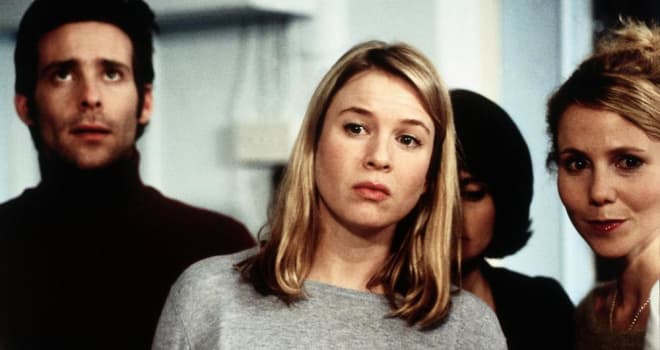 4. Zellweger finally won Maguire over, convincing her that her salty, Texas-bred sense of humor helped her empathize with the earthy Bridget. But when her casting was announced, many Brits were outraged over the idea of an American playing such a quintessentially English character. To learn Bridget's British accent, Zellweger enlisted Barbara Berkery, the dialect coach who had guided
4. Zellweger finally won Maguire over, convincing her that her salty, Texas-bred sense of humor helped her empathize with the earthy Bridget. But when her casting was announced, many Brits were outraged over the idea of an American playing such a quintessentially English character. To learn Bridget's British accent, Zellweger enlisted Barbara Berkery, the dialect coach who had guided 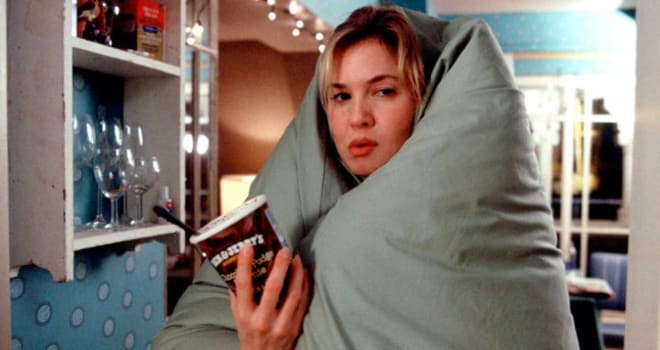 6. The willowy actress also had to pull a "
6. The willowy actress also had to pull a "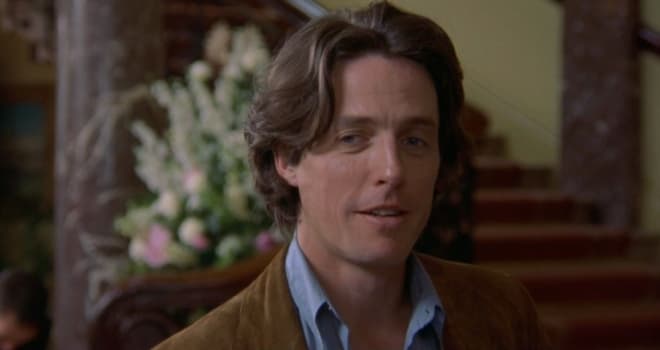 8. At the time he was cast as cad Daniel Cleaver, Hugh Grant was known for stammering nice-guy roles in such Curtis comedies as "Four Weddings" and "
8. At the time he was cast as cad Daniel Cleaver, Hugh Grant was known for stammering nice-guy roles in such Curtis comedies as "Four Weddings" and "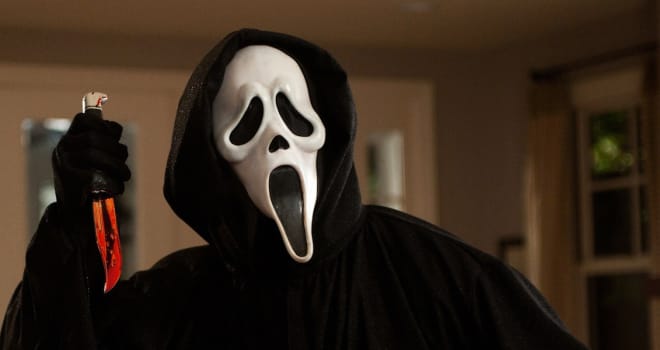 It's been five years since the release of "
It's been five years since the release of "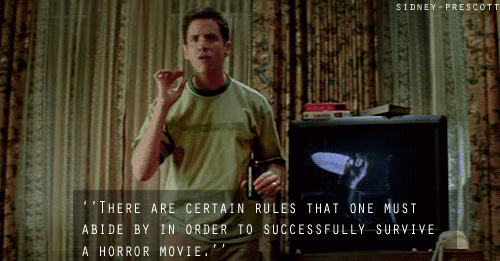 1. "Scream" was originally a screenplay by
1. "Scream" was originally a screenplay by 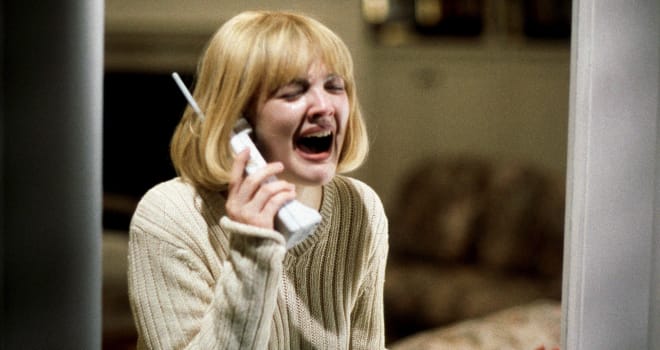 3. Horror master
3. Horror master 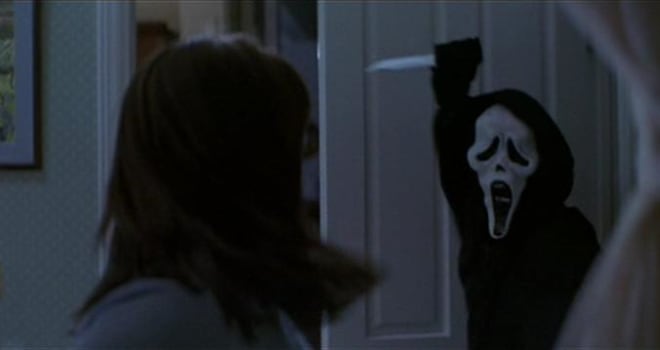 5. The menacing phone voice of Ghostface in all the movies belongs to Roger L. Jackson, who also voices the villainous chimp Mojo Jojo on "
5. The menacing phone voice of Ghostface in all the movies belongs to Roger L. Jackson, who also voices the villainous chimp Mojo Jojo on "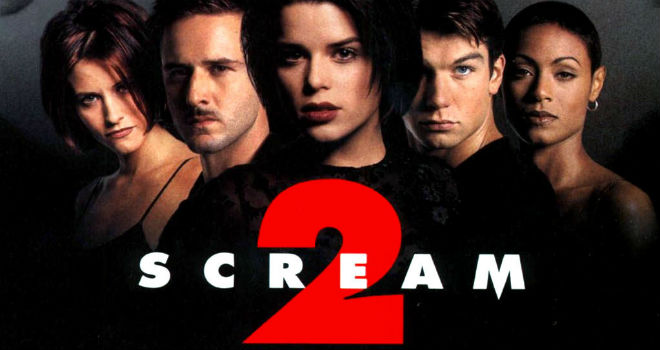 7. With the success of "Scream," the sequel was rushed into production, shooting in July 1997 for a release date that December. The haste led to a leak of the script, forcing Williamson to rewrite on set and change the identity of the killers.
7. With the success of "Scream," the sequel was rushed into production, shooting in July 1997 for a release date that December. The haste led to a leak of the script, forcing Williamson to rewrite on set and change the identity of the killers.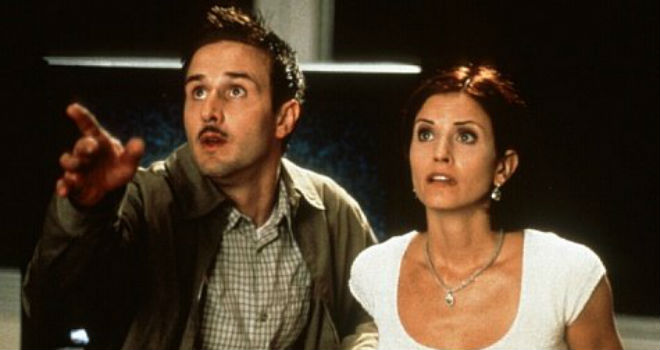 9. Cox and
9. Cox and 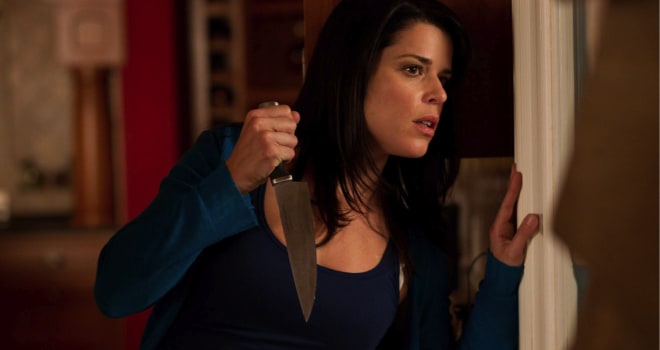 11. Williamson proposed a second trilogy in 2008, but only got as far as "Scream 4." (Blame that film's less-than-expected box office for why the fifth and sixth films never materialized.) Weinstein instead decided to launch the MTV series in June 2015. Craven's death in August 2015 probably puts the kibosh on any more "Scream" movies.
11. Williamson proposed a second trilogy in 2008, but only got as far as "Scream 4." (Blame that film's less-than-expected box office for why the fifth and sixth films never materialized.) Weinstein instead decided to launch the MTV series in June 2015. Craven's death in August 2015 probably puts the kibosh on any more "Scream" movies.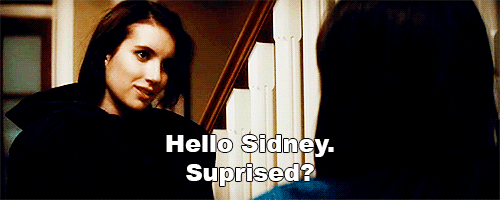 13. The "Scream 4" filmmakers initially offered
13. The "Scream 4" filmmakers initially offered 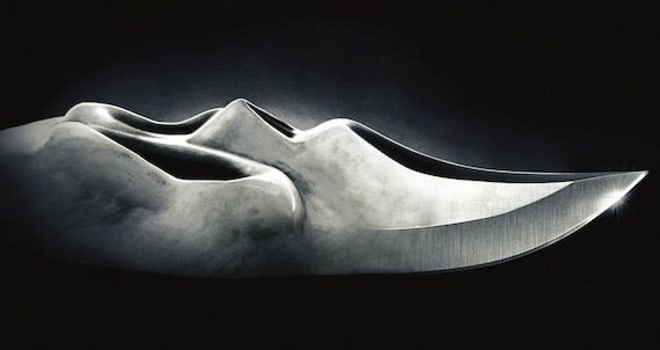 15. The Ghostface mask was designed by retailer Fun World in 1991, inspired (aptly) by Edvard Munch's famous painting "The Scream." It was also inspired by a figure from Gerald Scarfe's artwork from Pink Floyd's "The Wall" album and some ghost figures in an old Betty Boop cartoon.
15. The Ghostface mask was designed by retailer Fun World in 1991, inspired (aptly) by Edvard Munch's famous painting "The Scream." It was also inspired by a figure from Gerald Scarfe's artwork from Pink Floyd's "The Wall" album and some ghost figures in an old Betty Boop cartoon. Twenty years ago this week, four teenage girls dabbled in magic powers and unleashed forces more powerful than they could have imagined. We're not just talking about the plot of "
Twenty years ago this week, four teenage girls dabbled in magic powers and unleashed forces more powerful than they could have imagined. We're not just talking about the plot of " 1. Star
1. Star  3.
3. 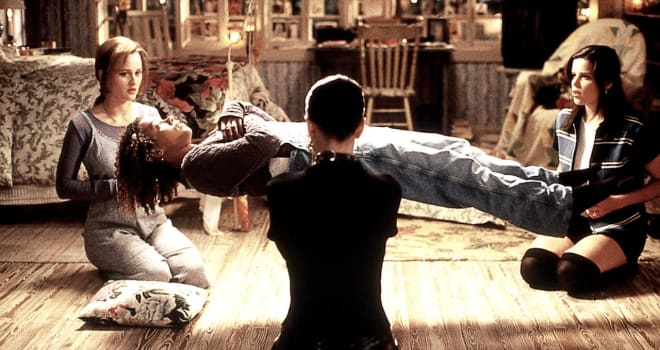 5.
5.  7. The knife fight between Tunney and Balk won the MTV Movie Award for Best Fight, beating such experienced big-screen fighters as Jackie Chan (in "Police Story 4") and Jim Brown (in "Mars Attacks").
7. The knife fight between Tunney and Balk won the MTV Movie Award for Best Fight, beating such experienced big-screen fighters as Jackie Chan (in "Police Story 4") and Jim Brown (in "Mars Attacks"). 10. A year ago,
10. A year ago, 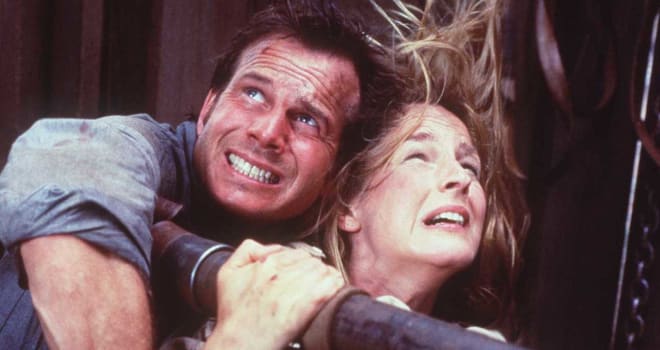 Released 20 years ago this week (on May 10, 1996), "
Released 20 years ago this week (on May 10, 1996), "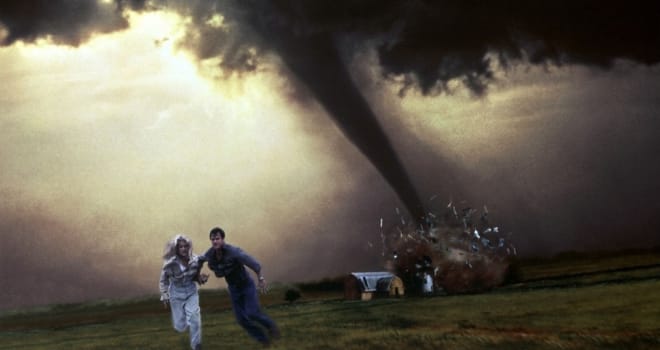 1. The "Twister" screenplay is credited to "
1. The "Twister" screenplay is credited to "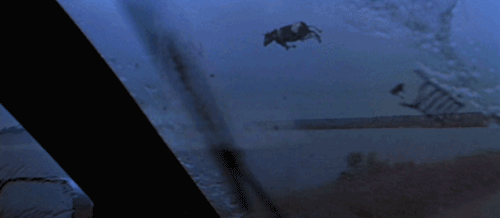 3.
3. 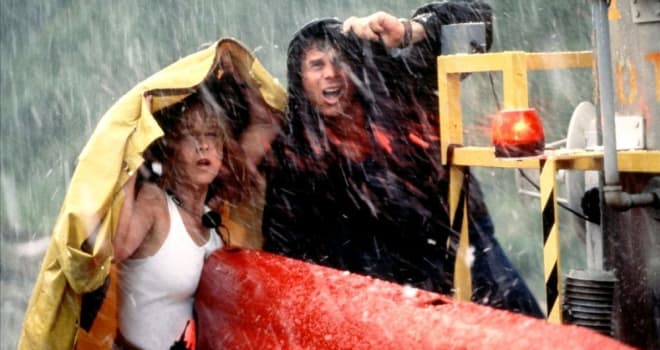 5. Tensions flared between de Bont and cinematographer
5. Tensions flared between de Bont and cinematographer 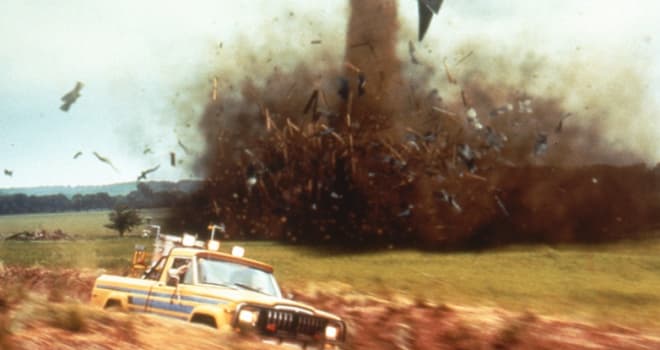 7. Much of the film was shot in Wakita, Oklahoma, where producers purchased and then leveled eight blocks of existing houses, as well as flattening 30 homes built for the shoot. According to the
7. Much of the film was shot in Wakita, Oklahoma, where producers purchased and then leveled eight blocks of existing houses, as well as flattening 30 homes built for the shoot. According to the 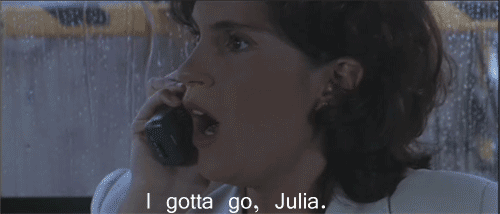 9. "Twister" was nominated for two Oscars, for Best Visual Effects and Best Sound. It was also nominated for two Razzies, including Worst Supporting Actress (for Gertz, pictured). The Crichtons won the Razzie for Worst Written Film Grossing Over $100 Million.
9. "Twister" was nominated for two Oscars, for Best Visual Effects and Best Sound. It was also nominated for two Razzies, including Worst Supporting Actress (for Gertz, pictured). The Crichtons won the Razzie for Worst Written Film Grossing Over $100 Million.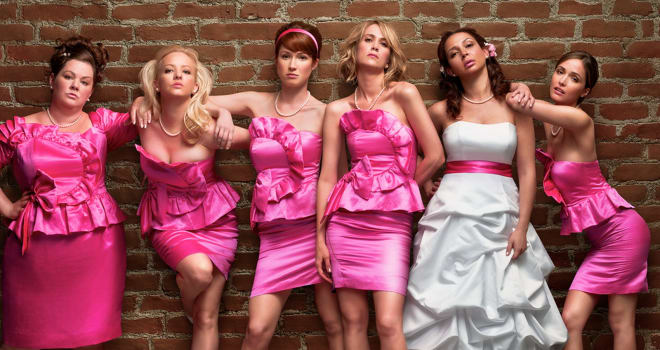 You can pinpoint the moment almost precisely when "
You can pinpoint the moment almost precisely when "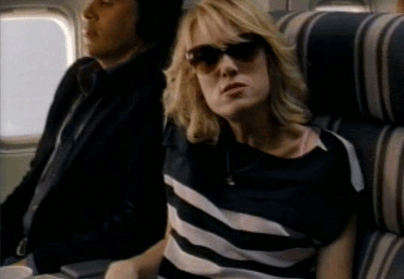 1. "Bridesmaids" came about because of Wiig's cameo as a hostile TV producer in Apatow's "
1. "Bridesmaids" came about because of Wiig's cameo as a hostile TV producer in Apatow's "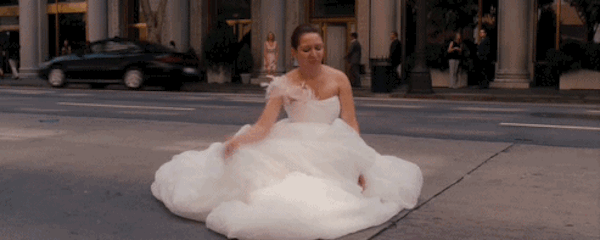 4. Future "
4. Future "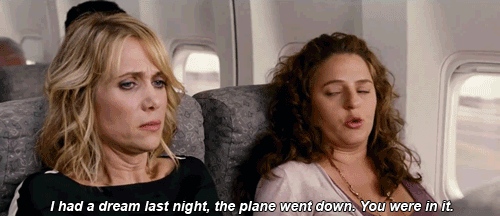 6. Early drafts of the script featured a bachelorette party sequence in Las Vegas, but just three weeks before shooting, producer Apatow nixed the scene, complaining that there had been too many recent movies (notably, "
6. Early drafts of the script featured a bachelorette party sequence in Las Vegas, but just three weeks before shooting, producer Apatow nixed the scene, complaining that there had been too many recent movies (notably, "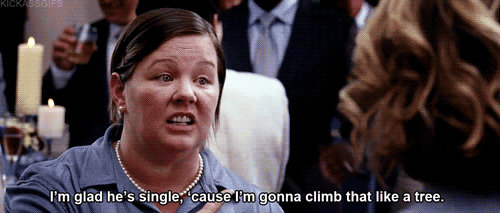 9. At the 2012 Oscars, "Bridesmaids" received two nominations, for Best Original Screenplay and for Best Supporting Actress, for McCarthy.
9. At the 2012 Oscars, "Bridesmaids" received two nominations, for Best Original Screenplay and for Best Supporting Actress, for McCarthy.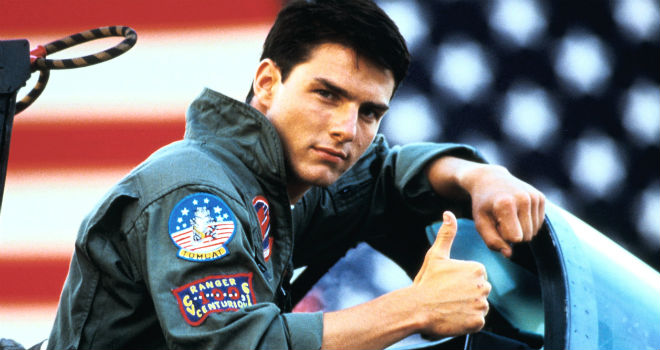 Could there be a more quintessentially 1980s movie than "
Could there be a more quintessentially 1980s movie than "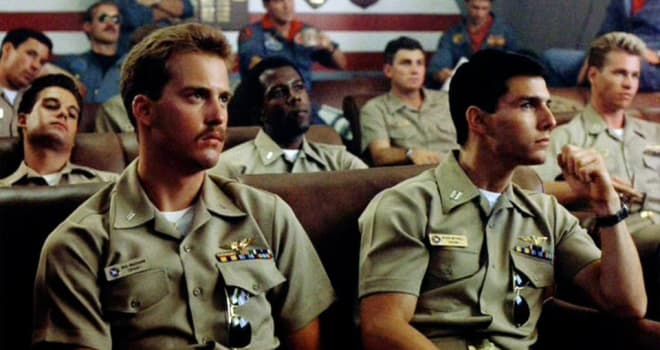 1. The film originated as "Top Guns," a 1983 article by Ehud Yonay in California Magazine. It profiled the Navy pilot training center at Miramar, in San Diego, and featured aerial photography by a Top Gun pilot. Co-screenwriter Jack Epps Jr. researched the script by attending Top Gun classes and getting flown around in an F-14.
1. The film originated as "Top Guns," a 1983 article by Ehud Yonay in California Magazine. It profiled the Navy pilot training center at Miramar, in San Diego, and featured aerial photography by a Top Gun pilot. Co-screenwriter Jack Epps Jr. researched the script by attending Top Gun classes and getting flown around in an F-14.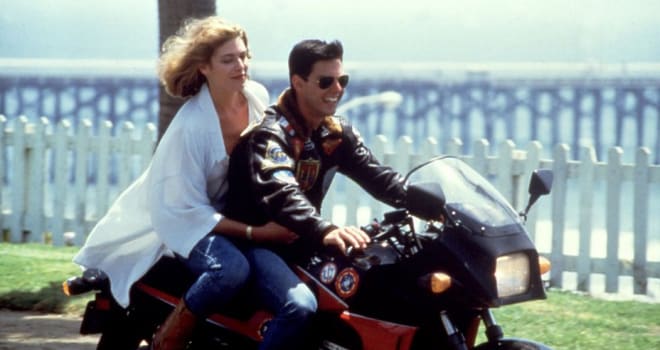 4.
4. 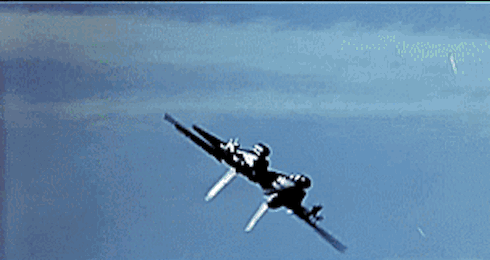 7. The F-14 planes and other naval aircraft -- along with their fuel, their pilots, and support staff -- cost the production $7,800 per hour in rental fees. Even more expensive was the aircraft carrier. During one sequence, the carrier captain had to change course, altering the angle of light for the shot. Told it would cost $25,000 to turn the ship around, director
7. The F-14 planes and other naval aircraft -- along with their fuel, their pilots, and support staff -- cost the production $7,800 per hour in rental fees. Even more expensive was the aircraft carrier. During one sequence, the carrier captain had to change course, altering the angle of light for the shot. Told it would cost $25,000 to turn the ship around, director 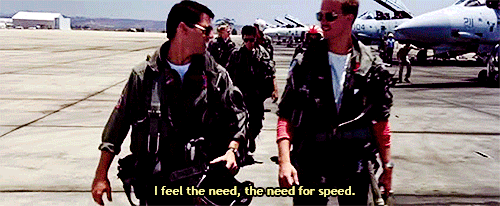 10. "Top Gun" also became an early top-seller in the then-new videocassette market, as it was one of the first films priced to sell (at just $20), not just to rent.
10. "Top Gun" also became an early top-seller in the then-new videocassette market, as it was one of the first films priced to sell (at just $20), not just to rent.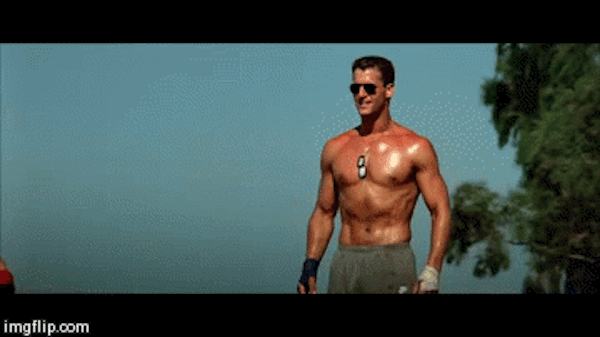 13. Did all that male bonding, towel-snapping, and shirtless volleyball-playing make "Top Gun"
13. Did all that male bonding, towel-snapping, and shirtless volleyball-playing make "Top Gun" 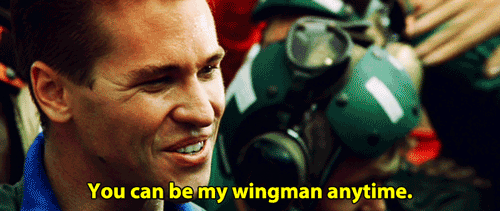
 Before 1996, "Mission: Impossible" was a long-since-cancelled TV spy series, beloved by Boomers but forgotten by anyone younger. Today, of course, it's a popular Tom Cruise movie franchise, known for its twisty plotting and jaw-dropping stunt sequences, whose five installments to date have grossed $935 million in North America and $2.8 billion worldwide.
Before 1996, "Mission: Impossible" was a long-since-cancelled TV spy series, beloved by Boomers but forgotten by anyone younger. Today, of course, it's a popular Tom Cruise movie franchise, known for its twisty plotting and jaw-dropping stunt sequences, whose five installments to date have grossed $935 million in North America and $2.8 billion worldwide.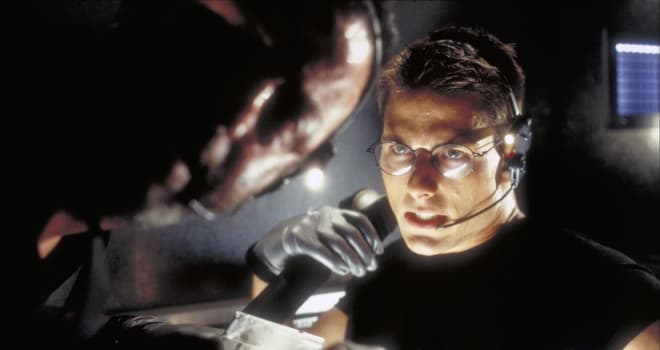 1. "Mission: Impossible" marked Cruise's debut as a producer. In a deal that would become his then-customary contract, he took no money up front but negotiated a lucrative percentage of the theatrical and video gross profits, reportedly as high as 22 percent. Cruise reportedly pocketed an estimated $70 million for the first "Mission."
1. "Mission: Impossible" marked Cruise's debut as a producer. In a deal that would become his then-customary contract, he took no money up front but negotiated a lucrative percentage of the theatrical and video gross profits, reportedly as high as 22 percent. Cruise reportedly pocketed an estimated $70 million for the first "Mission."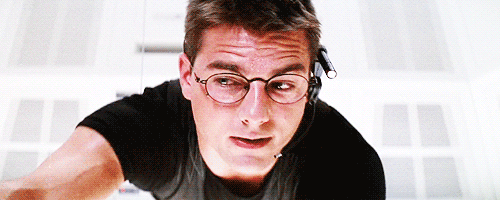 3. When Jim Phelps (
3. When Jim Phelps (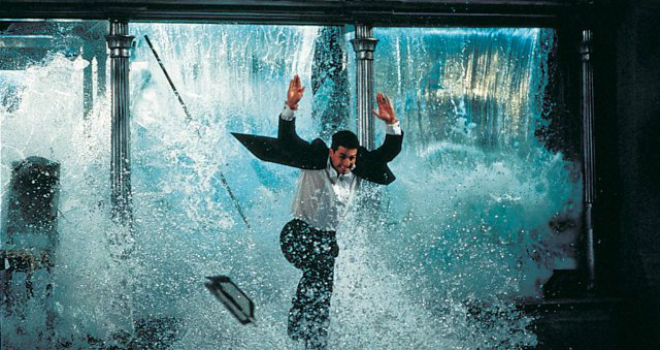 5. The exploding fish tank stunt was reportedly Cruise's idea. De Palma tried to shoot it with a stunt double, but the results were unconvincing. So that's really Cruise you see as he flees from 16 tons of rushing water.
5. The exploding fish tank stunt was reportedly Cruise's idea. De Palma tried to shoot it with a stunt double, but the results were unconvincing. So that's really Cruise you see as he flees from 16 tons of rushing water.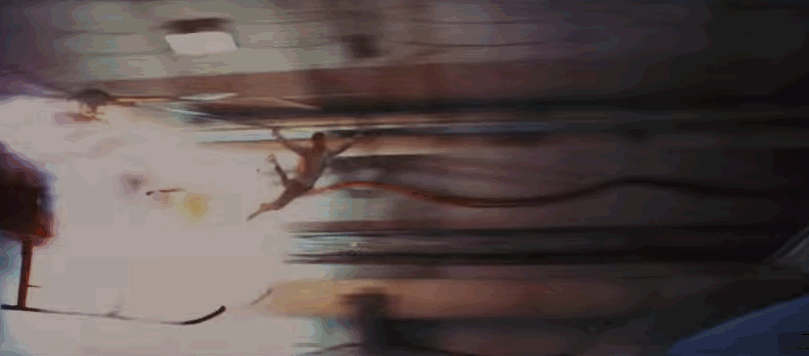 7. Even so, much of that sequence was filmed in front of a blue screen on the James Bond soundstage at Pinewood Studios. But the scene where the helicopter blast hurls Ethan onto the surface of the train (above) still involved flinging Cruise himself through the air.
7. Even so, much of that sequence was filmed in front of a blue screen on the James Bond soundstage at Pinewood Studios. But the scene where the helicopter blast hurls Ethan onto the surface of the train (above) still involved flinging Cruise himself through the air.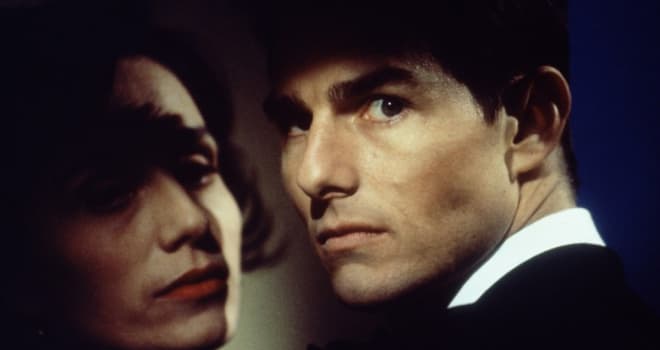 9. The opening sequence in Prague marked the first time a major Hollywood production had filmed in the Czech capital since the fall of communism. Unfortunately, Cruise and his fellow producers felt gouged by the local authorities when they rented the historic Lichetenstein Palace as an exterior location and were charged 10 times the fee they expected. City authorities claimed the lower-quoted price had never been an authorized offer.
9. The opening sequence in Prague marked the first time a major Hollywood production had filmed in the Czech capital since the fall of communism. Unfortunately, Cruise and his fellow producers felt gouged by the local authorities when they rented the historic Lichetenstein Palace as an exterior location and were charged 10 times the fee they expected. City authorities claimed the lower-quoted price had never been an authorized offer.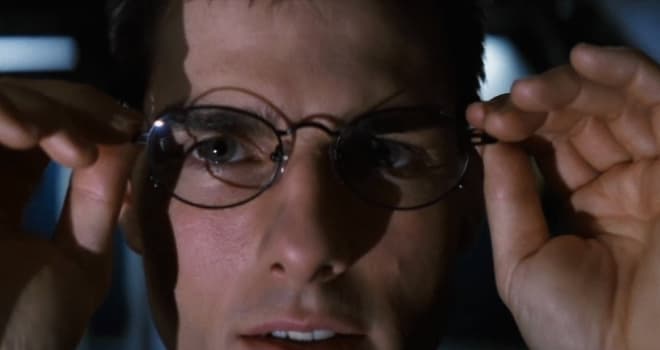 11. "Mission: Impossible" was the first film to open on more than 3,000 screens. (3,012, to be exact.) It earned $181 million in North America and $458 million worldwide.
11. "Mission: Impossible" was the first film to open on more than 3,000 screens. (3,012, to be exact.) It earned $181 million in North America and $458 million worldwide.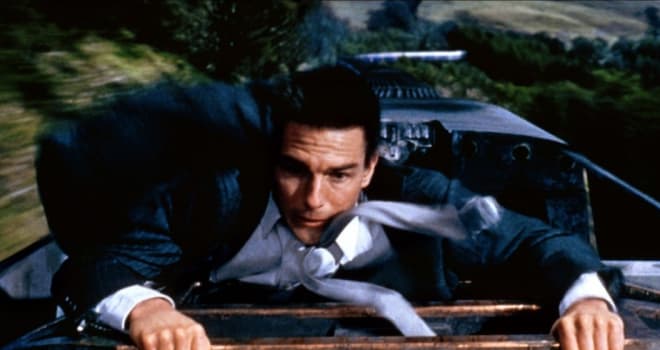 13. One original element from the show that remained intact was Lalo Schifrin's iconic, pounding theme song, which De Palma used over the opening credits. But the film closed with a new version by U2 members Adam Clayton and Larry Mullen Jr. Their pop instrumental became a top 10 hit worldwide and was nominated at the 1997 Grammys, where it competed against Schifrin's own new recording of the song.
13. One original element from the show that remained intact was Lalo Schifrin's iconic, pounding theme song, which De Palma used over the opening credits. But the film closed with a new version by U2 members Adam Clayton and Larry Mullen Jr. Their pop instrumental became a top 10 hit worldwide and was nominated at the 1997 Grammys, where it competed against Schifrin's own new recording of the song.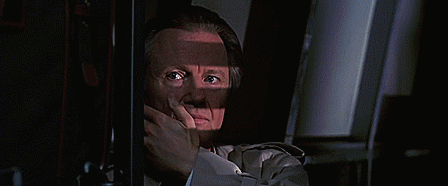 15. "Mission: Impossible" establishes Ethan for the rest of the franchise as a spy who prefers deception and disguise to violence. In this film, though not in future installments, he never gets involved in a gunfight; in fact, he never even fires a weapon. And the body count for the entire film is just seven casualties.
15. "Mission: Impossible" establishes Ethan for the rest of the franchise as a spy who prefers deception and disguise to violence. In this film, though not in future installments, he never gets involved in a gunfight; in fact, he never even fires a weapon. And the body count for the entire film is just seven casualties.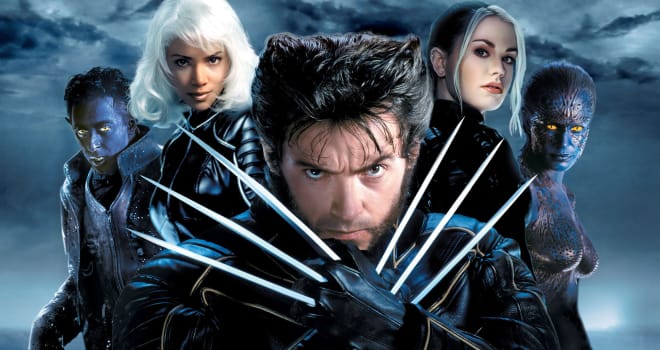 At this point in its run, the X-Men franchise must be imbibing a little of Wolverine's healing factor.
At this point in its run, the X-Men franchise must be imbibing a little of Wolverine's healing factor.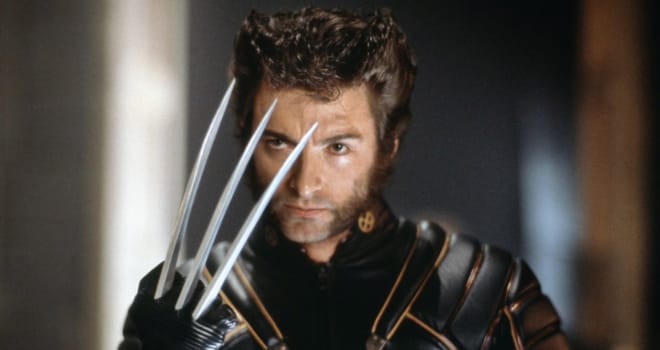 1.
1. 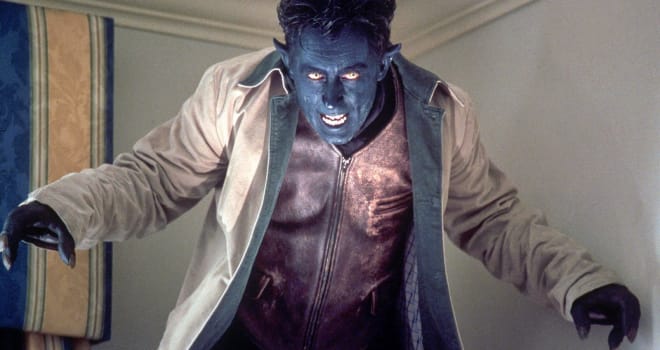 4. This sequel is one of the major reasons leading to Marvel's decision to reveal Wolverine's origin story in the comic book, "Origin." Many within the publisher feared that the movies would end up revealing this murky period of Wolverine's past before they got the chance.
4. This sequel is one of the major reasons leading to Marvel's decision to reveal Wolverine's origin story in the comic book, "Origin." Many within the publisher feared that the movies would end up revealing this murky period of Wolverine's past before they got the chance.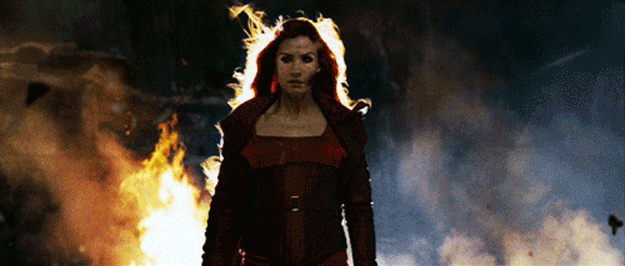 7.
7. 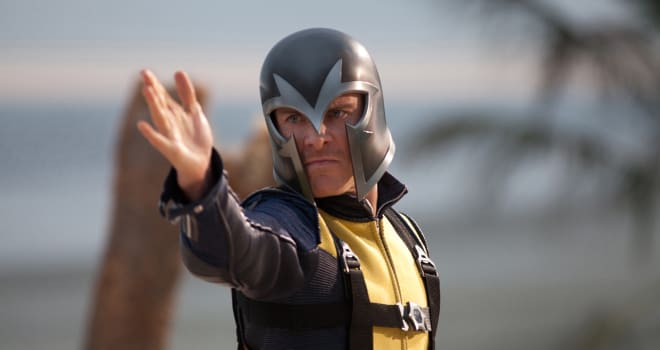 10. This prequel started life as a Magneto-centric story in the vein of "
10. This prequel started life as a Magneto-centric story in the vein of " 13. Wolverine's apartment in 1973 is decorated with many references and homages to his Japanese travels, including samurai swords and a photo of Mt. Fuji. Even the red and yellow color scheme pays tribute to his 1980's-era costume from the comics (a costume that he has yet to actually wear in the films).
13. Wolverine's apartment in 1973 is decorated with many references and homages to his Japanese travels, including samurai swords and a photo of Mt. Fuji. Even the red and yellow color scheme pays tribute to his 1980's-era costume from the comics (a costume that he has yet to actually wear in the films).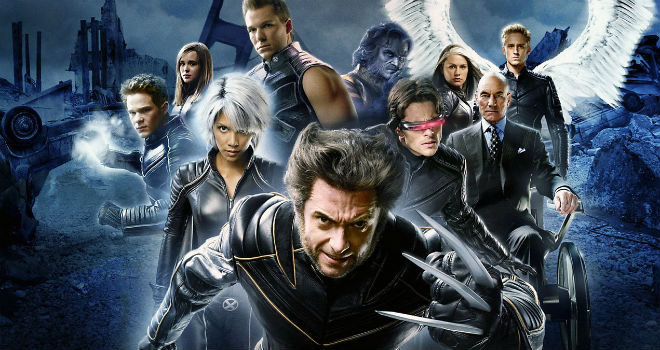 When it was released 10 years ago (on May 26, 2006), "
When it was released 10 years ago (on May 26, 2006), "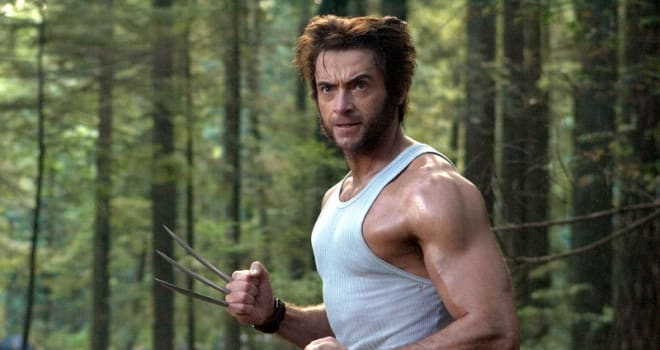 1. After directing the first two "X-Men" movies to critical and commercial success, Singer famously dropped out of the third movie to make "
1. After directing the first two "X-Men" movies to critical and commercial success, Singer famously dropped out of the third movie to make "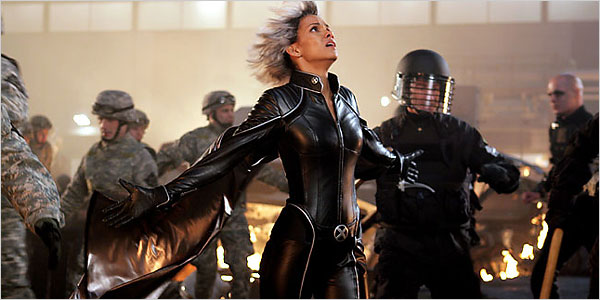 3. One star who was thrilled Ratner was on board was
3. One star who was thrilled Ratner was on board was 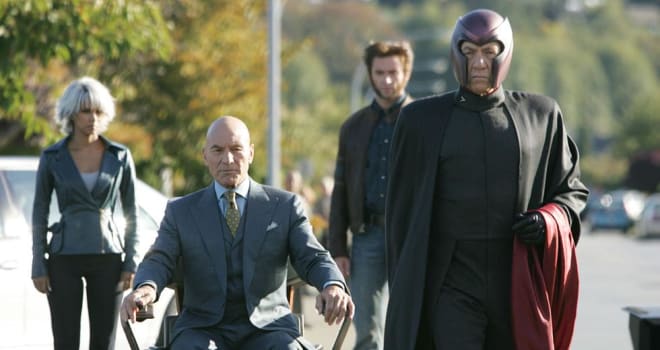 5. Like the other stars of the first two movies, Patrick Stewart wasn't contracted to do a third. But he signed on for "Last Stand" anyway, not knowing that his character, Charles Xavier, was going to be killed off.
5. Like the other stars of the first two movies, Patrick Stewart wasn't contracted to do a third. But he signed on for "Last Stand" anyway, not knowing that his character, Charles Xavier, was going to be killed off.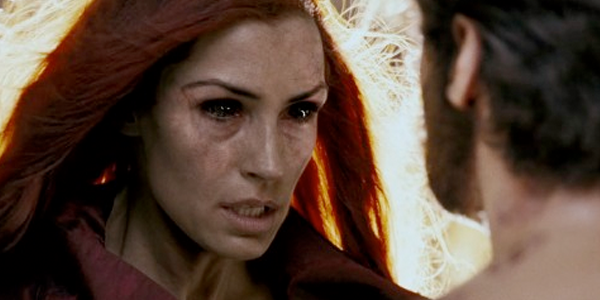 7. How much time passed between Jean Grey's death in "
7. How much time passed between Jean Grey's death in "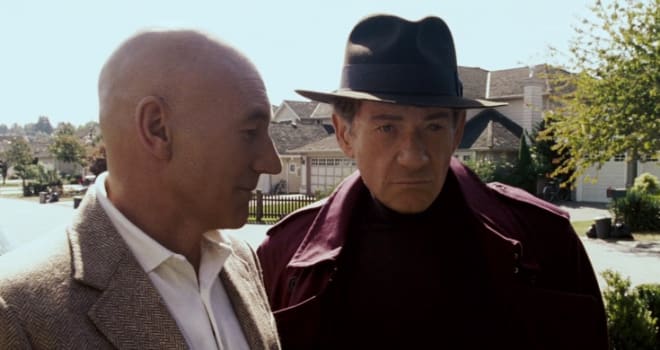 9. One of the film's most noteworthy effects, considered groundbreaking at the time, was the digital facelift used to make Stewart's Professor X and
9. One of the film's most noteworthy effects, considered groundbreaking at the time, was the digital facelift used to make Stewart's Professor X and 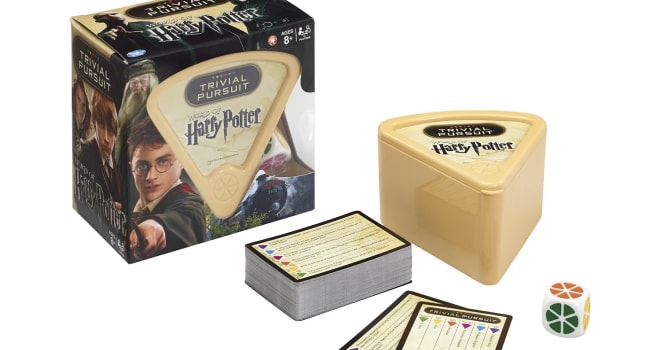 Trivia is a movie lover's best friend. Seriously, have you ever been to a dinner with other movie lovers chattering about everything from new releases to which movies
Trivia is a movie lover's best friend. Seriously, have you ever been to a dinner with other movie lovers chattering about everything from new releases to which movies 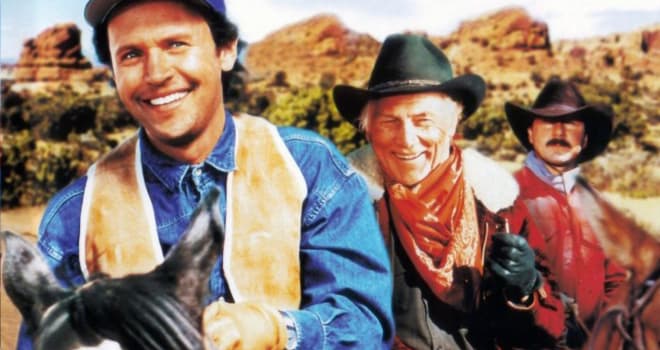 It's hard to imagine being nostalgic for a midlife crisis. Nonetheless, it's been 25 years since
It's hard to imagine being nostalgic for a midlife crisis. Nonetheless, it's been 25 years since 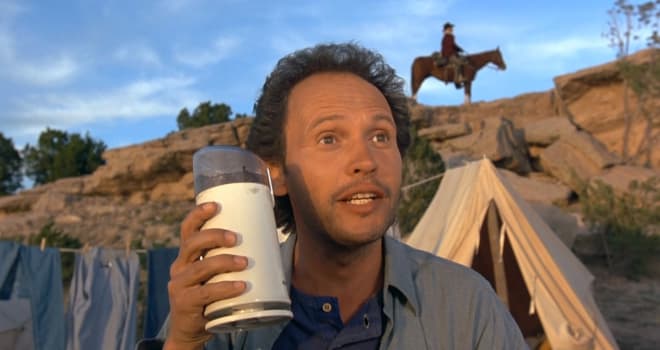 2. When Crystal was a kid, his dad ran a popular Manhattan record store and knew a lot of jazz musicians, and seven-year-old Crystal had no less than Billie Holiday for a babysitter. He sat on her lap when he went to see his first movie, the classic 1953 Western "
2. When Crystal was a kid, his dad ran a popular Manhattan record store and knew a lot of jazz musicians, and seven-year-old Crystal had no less than Billie Holiday for a babysitter. He sat on her lap when he went to see his first movie, the classic 1953 Western "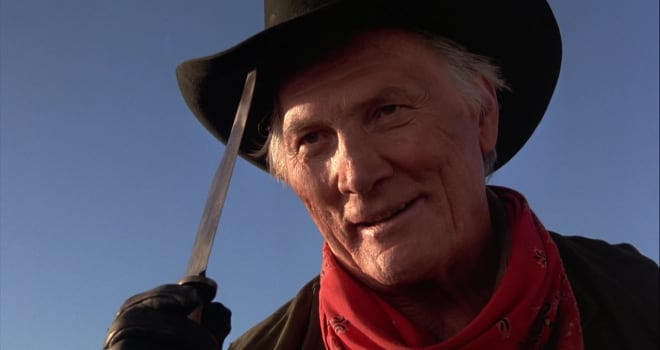 4.
4. 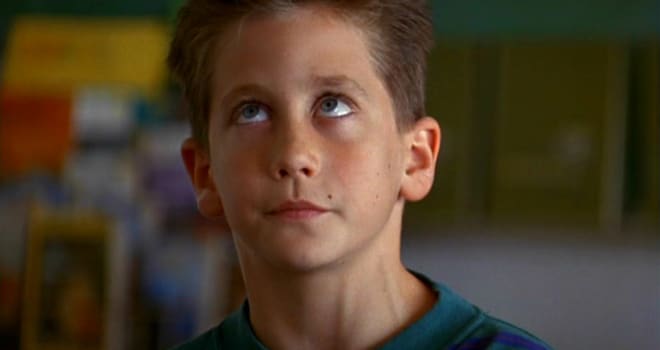 6. Crystal's softball team pal and "
6. Crystal's softball team pal and "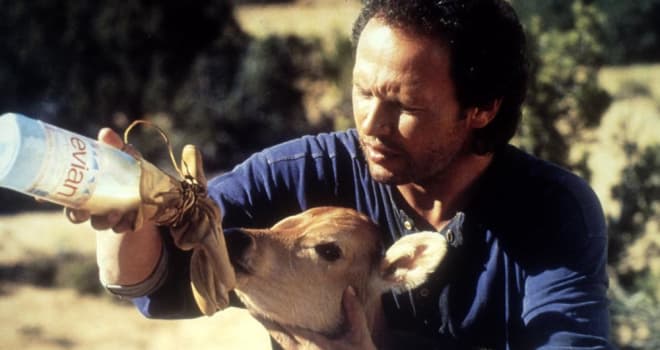 8. "City Slickers" cost a reported $27 million to make. It earned $124 million in North America and a total of $179 million worldwide.
8. "City Slickers" cost a reported $27 million to make. It earned $124 million in North America and a total of $179 million worldwide.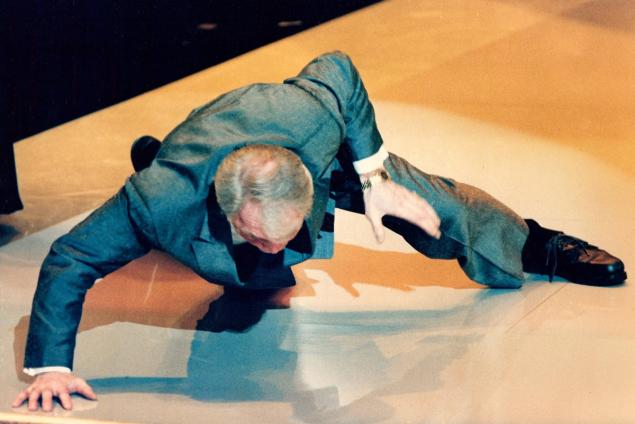 10. When his "City Slickers" performance won the Oscar for Best Supporting Actor -- 38 years after his previous nomination, for "Shane" -- Palance famously wowed the Academy Awards audience and host Crystal with a celebratory round of one-armed push-ups. Turns out the 73-year-old was re-enacting the display he'd given to the film's insurers to prove he was fit enough to play Curly.
10. When his "City Slickers" performance won the Oscar for Best Supporting Actor -- 38 years after his previous nomination, for "Shane" -- Palance famously wowed the Academy Awards audience and host Crystal with a celebratory round of one-armed push-ups. Turns out the 73-year-old was re-enacting the display he'd given to the film's insurers to prove he was fit enough to play Curly.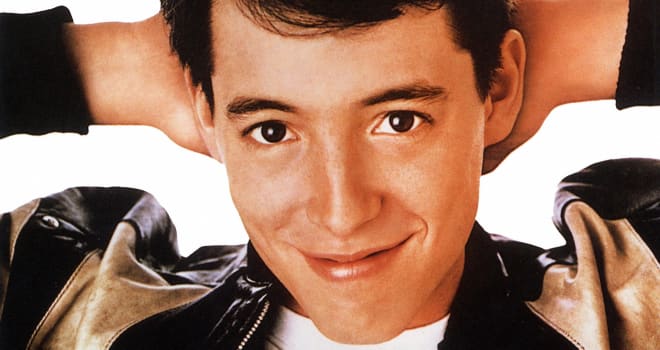
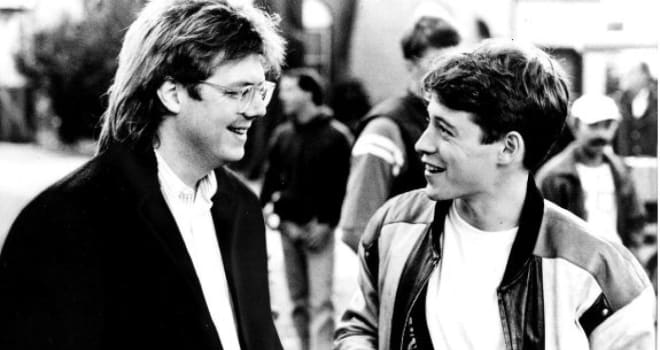 1. Hughes (pictured left) wrote the script in a week, trying to get it done before the onset of a Writers Guild strike.
1. Hughes (pictured left) wrote the script in a week, trying to get it done before the onset of a Writers Guild strike.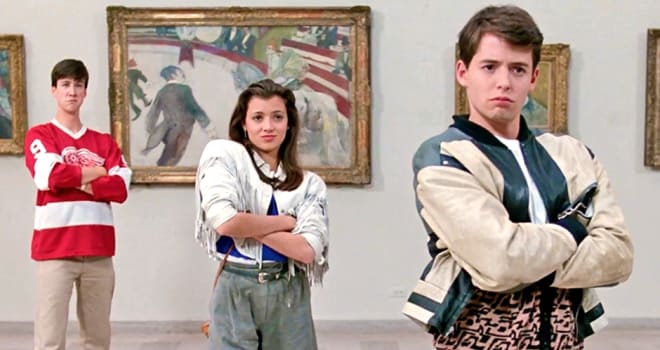 3. Hughes refused to cast his regular leading lady
3. Hughes refused to cast his regular leading lady 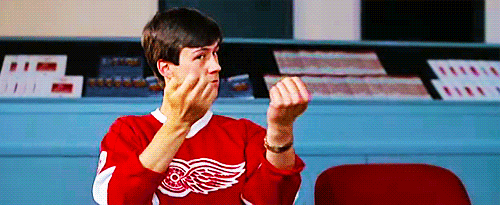 5. Ferris and Cameron's camaraderie came easily to Broderick and Ruck, who had co-starred on Broadway in "
5. Ferris and Cameron's camaraderie came easily to Broderick and Ruck, who had co-starred on Broadway in "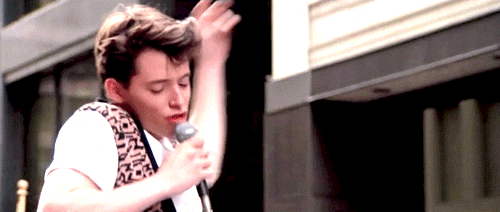 7. Some of the parade scenes were staged for the film, but the close-ups of Ferris performing "Twist and Shout" required Broderick to crash an actual parade, Ferris-style.
7. Some of the parade scenes were staged for the film, but the close-ups of Ferris performing "Twist and Shout" required Broderick to crash an actual parade, Ferris-style.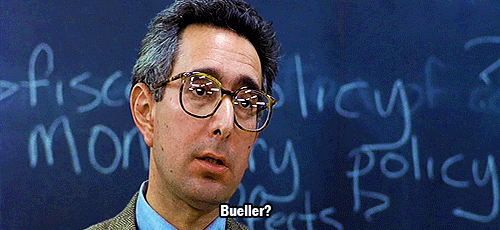 9. The film cost a mere $5.8 million to make. It earned back $70.1 million to become the 10th-biggest hit of 1986.
9. The film cost a mere $5.8 million to make. It earned back $70.1 million to become the 10th-biggest hit of 1986. What's left to say about "
What's left to say about "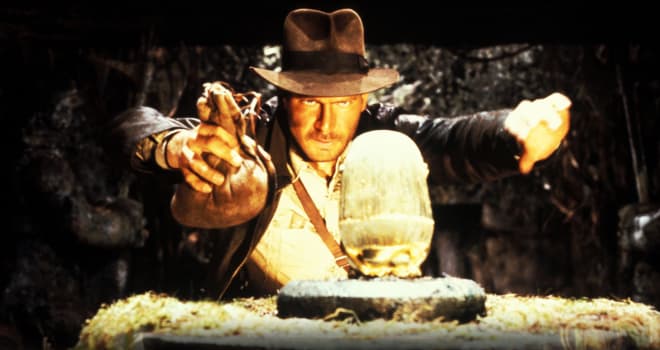 1. Indiana Jones's name really did come from the dog -- the dog owned by George Lucas's then-wife, Marcia. That Indiana had also been the inspiration for Ford's "
1. Indiana Jones's name really did come from the dog -- the dog owned by George Lucas's then-wife, Marcia. That Indiana had also been the inspiration for Ford's "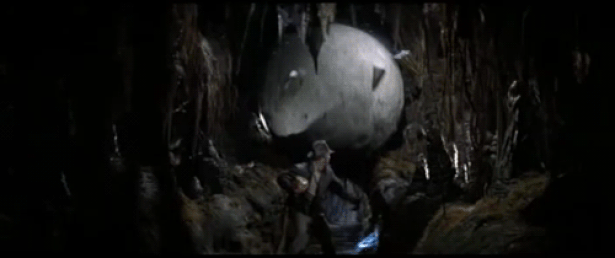 3. The giant boulder was made of plaster, wood, and fiberglass and weighed 300 pounds. It could have seriously injured anyone in its path. Spielberg agreed to let Ford film the stunt himself, from five different angles, each shot twice. Of Ford's ability to outrun the boulder, Spielberg later said, "He won 10 times and beat the odds. He was lucky, and I was an idiot for letting him try."
3. The giant boulder was made of plaster, wood, and fiberglass and weighed 300 pounds. It could have seriously injured anyone in its path. Spielberg agreed to let Ford film the stunt himself, from five different angles, each shot twice. Of Ford's ability to outrun the boulder, Spielberg later said, "He won 10 times and beat the odds. He was lucky, and I was an idiot for letting him try."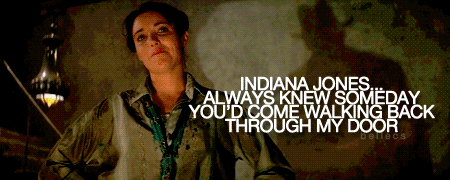 4.
4. 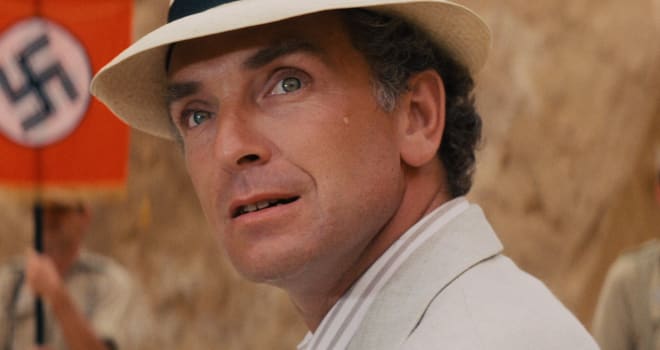 5. Yes,
5. Yes, 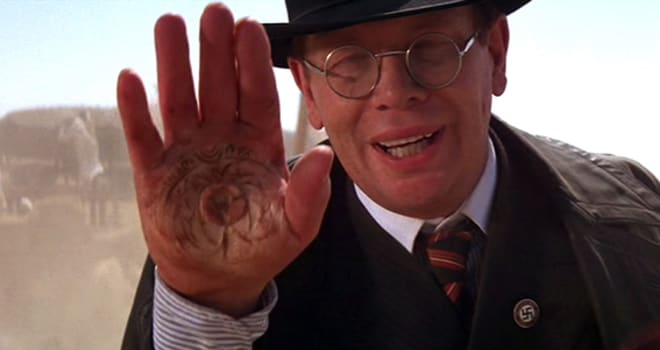 6. Spielberg had sketches drawn of Toht (
6. Spielberg had sketches drawn of Toht (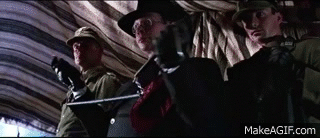 7. The gag where Toht wields what looks like a torture device, but turns out to be a coat hanger, is a joke Spielberg recycled from "1941." He filmed a similar scene with
7. The gag where Toht wields what looks like a torture device, but turns out to be a coat hanger, is a joke Spielberg recycled from "1941." He filmed a similar scene with 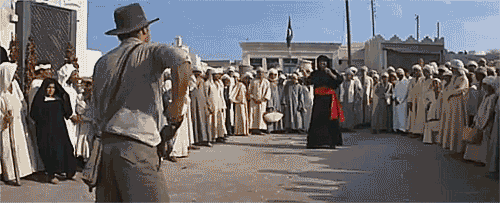 8. The food poisoning that afflicted nearly everyone on the Tunisian set (but not Spielberg, who brought his own canned Spaghetti-Os and bottled water from London) resulted in the improvisation of one of the most famous "Raiders" scenes, the one where Indy faces down an Egyptian swordsman.
8. The food poisoning that afflicted nearly everyone on the Tunisian set (but not Spielberg, who brought his own canned Spaghetti-Os and bottled water from London) resulted in the improvisation of one of the most famous "Raiders" scenes, the one where Indy faces down an Egyptian swordsman.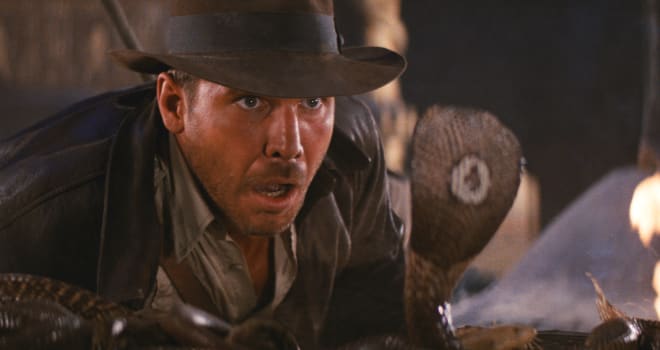 9. For the Well of Souls sequence (above), shot on a British soundstage, the producers rustled up 2,000 snakes, but they weren't enough to cover the floor. Scouring pet shops across Europe, the filmmakers found thousands more; different accounts say there were ultimately between 6,500 and 10,000 snakes in the scenes, plus lizards and lengths of rubber hose.
9. For the Well of Souls sequence (above), shot on a British soundstage, the producers rustled up 2,000 snakes, but they weren't enough to cover the floor. Scouring pet shops across Europe, the filmmakers found thousands more; different accounts say there were ultimately between 6,500 and 10,000 snakes in the scenes, plus lizards and lengths of rubber hose.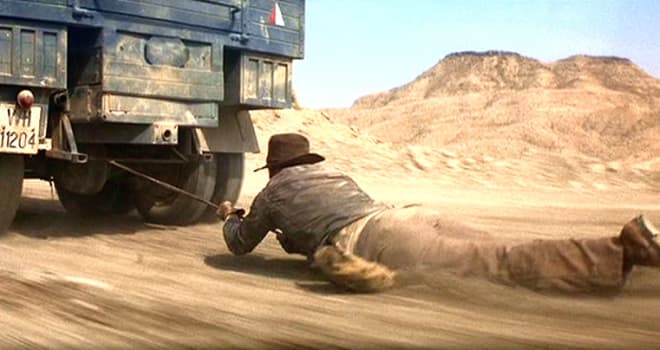 10. Much of the truck-chase sequence involves Ford himself being dragged behind the vehicle. "I'm sure it's not dangerous," he said of the stunt. "If it was dangerous, they would have waited 'til we got more of the movie done."
10. Much of the truck-chase sequence involves Ford himself being dragged behind the vehicle. "I'm sure it's not dangerous," he said of the stunt. "If it was dangerous, they would have waited 'til we got more of the movie done."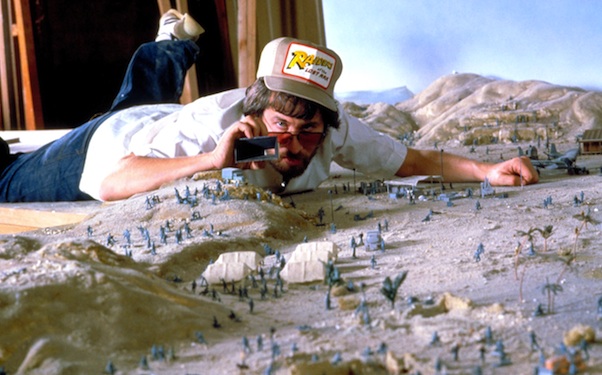 11. One way Spielberg saved money was by incorporating stock footage. Shots of the passenger plane in mid-flight came from 1937's "Lost Horizon," and a 1930s street scene came from 1975's "
11. One way Spielberg saved money was by incorporating stock footage. Shots of the passenger plane in mid-flight came from 1937's "Lost Horizon," and a 1930s street scene came from 1975's "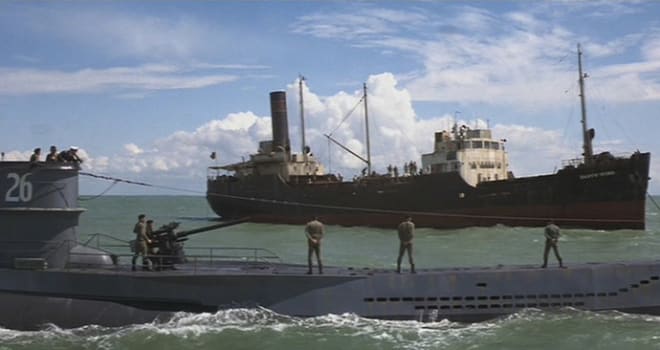 12. Also borrowed was the German submarine (above), which had been rented from the makers of the then-recent "
12. Also borrowed was the German submarine (above), which had been rented from the makers of the then-recent "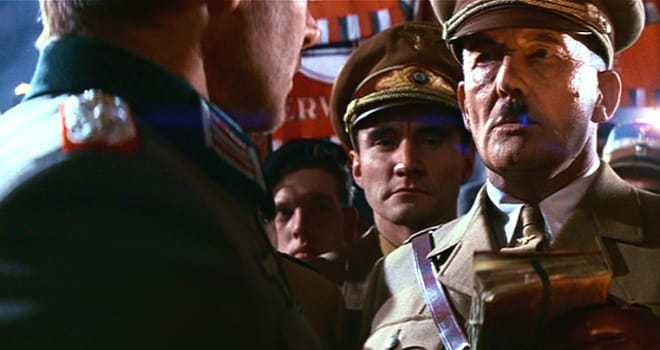 13.
13. 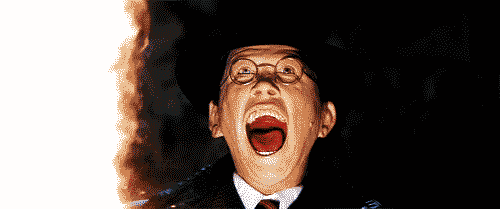 14. Toht's melting face was made of a combination of gelatin, colored yarn (to simulate muscles and veins), and alginate (what dentists use to make impressions) -- all molded over a skull made of stone. It took 10 minutes to melt under the onslaught of propane space heaters and a hair dryer; the footage was then sped up.
14. Toht's melting face was made of a combination of gelatin, colored yarn (to simulate muscles and veins), and alginate (what dentists use to make impressions) -- all molded over a skull made of stone. It took 10 minutes to melt under the onslaught of propane space heaters and a hair dryer; the footage was then sped up.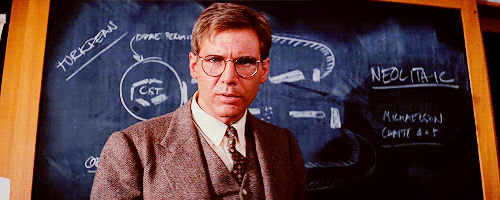 15. A fan theory -- mentioned prominently in "
15. A fan theory -- mentioned prominently in "